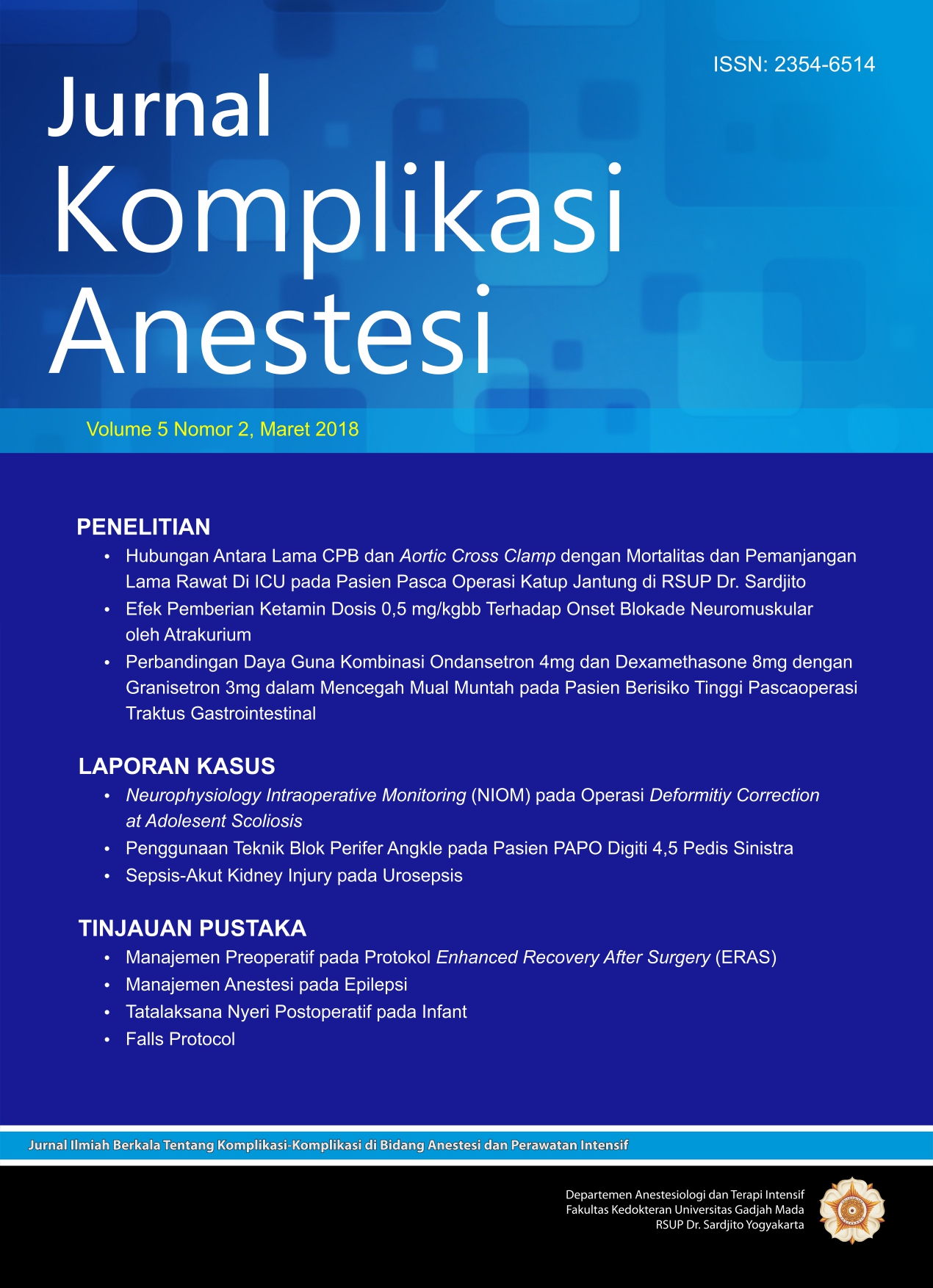Neurophysiology Intraoperative Monitoring (Niom) pada Operasi Deformitiy Correction at Adolesent Scoliosis
Abstract
The use of neurophysiological intraoperative monitoring (NIOM) during spinal orthopaedic and neurosurgical procedures provides a challenge to the attending anaesthesiologist. Since all anaesthetic agents affect synaptic function, the choice of agent will be determined by the type of surgery and the NIOM modality employed. Had been performed surgery for scoliosis correction of spinal abnormalities in children aged 15 years with using of sensory and motoric NIOM. The surgery going under general anesthesia with the installation monitor invasive arterial line and central venous pressure during surgery for hemodynamic monitoring. Drugs used during anesthesia using balanced anesthesia technique with a combination of opioids, propofol and sevoflurane as inhalation. Muscle relaxants given intermittently for operator leisure and ventilation controls. Postoperative hospitalization in ICU with the aim of assessing the function of the respiratory and neurological of the patients and pain management.

Copyright (c) 2018 Panji Herlambang, Sudadi, Sri Rahardjo

This work is licensed under a Creative Commons Attribution-NonCommercial-ShareAlike 4.0 International License.
The Contributor and the company/institution agree that all copies of the Final Published
Version or any part thereof distributed or posted by them in print or electronic format as permitted herein will include the notice of copyright as stipulated in the Journal and a full citation to the Journal.
















